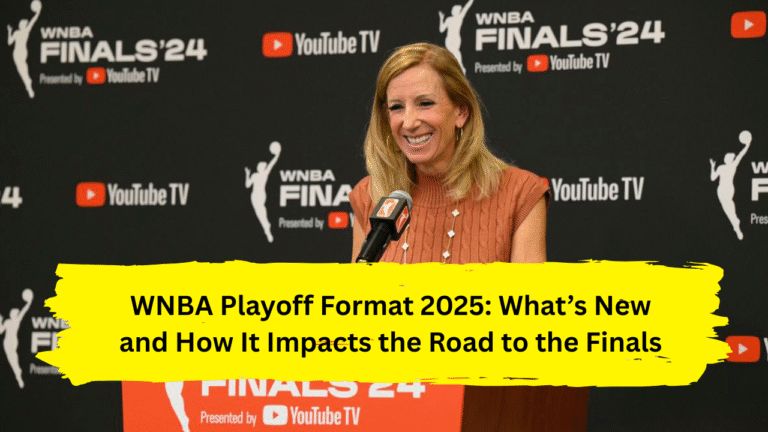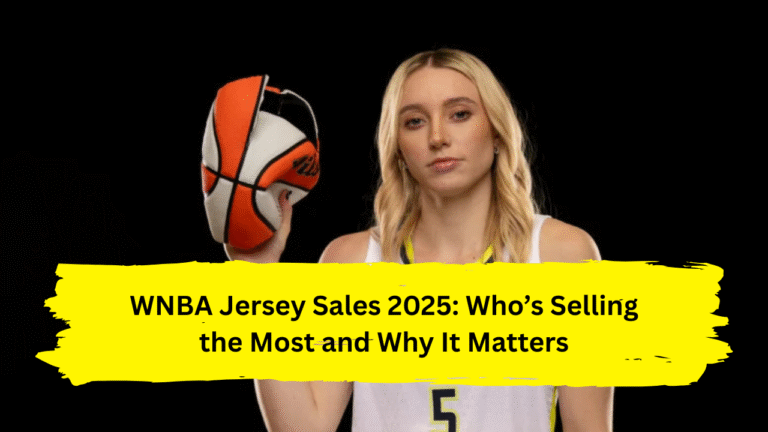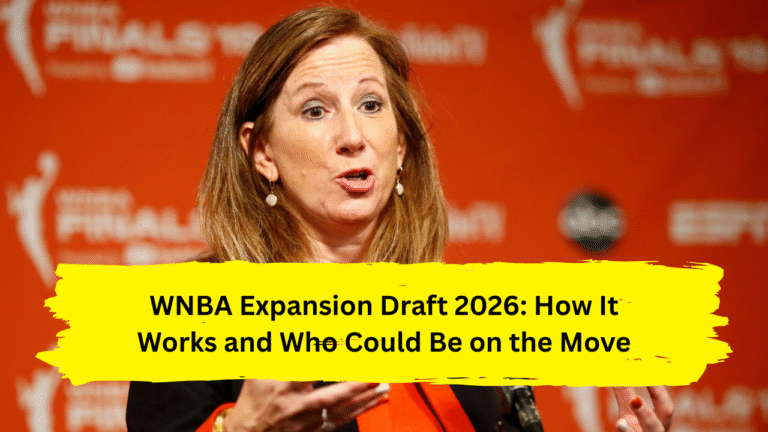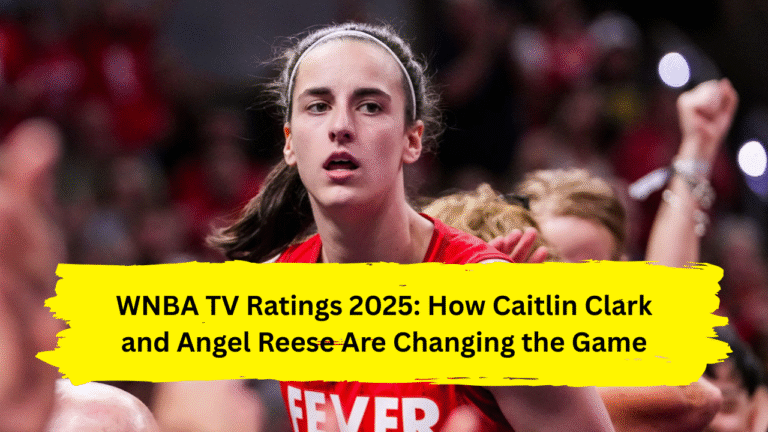
Picture this: 20,711 screaming fans packing Washington’s Capital One Arena—a single-game attendance record that would’ve been unthinkable just two years ago. The energy crackles like a live wire as Indiana Fever phenom Caitlin Clark sinks a logo three-pointer. Across the nation, 1.6 million households are glued to ESPN, witnessing history in real-time. This isn’t a fever dream—it’s the explosive reality of today’s WNBA .
From Niche to Mainstream: The Statistical Explosion
Viewership on Steroids
The 2024 season wasn’t just successful—it was a tectonic shift. A record-shattering 54 million unique viewers consumed WNBA games across networks like ABC, CBS, and ESPN. Consider these jaw-dropping metrics:
- ESPN’s average viewership skyrocketed 170% to 1.19 million
- CBS saw an 86% surge, while ION’s audience exploded by 133%
- 22 regular-season games averaged over 1 million viewers—more than doubling previous benchmarks .
The playoffs became appointment television. When Indiana faced Connecticut in Game 2, viewership peaked at 3.4 million—rivaling NHL playoff numbers. Even preseason games shattered records, with Clark’s exhibition against Brazil drawing 1.3 million viewers—outpacing every NBA preseason game on ESPN since 2018 .
Arenas Transformed Into Temples
The in-person experience mirrored the broadcast revolution. League-wide attendance hit a 22-year high with 2.4 million fans flooding arenas—a 48% year-over-year surge. All 12 teams enjoyed double-digit attendance growth, but Indiana became the undisputed hotspot:
- Their total home attendance (340,715) broke the WNBA’s single-season record
- Road game demand for Fever contests surpassed every other team
- When Clark returned to Iowa for a preseason game, 15,500 tickets vanished in 24 hours .
The Superstar Effect: How Talent Ignited the Boom
College Phenoms Turned Pro Powerhouses
You couldn’t script a better talent pipeline. Caitlin Clark and Angel Reese didn’t just enter the league—they brought their armies of followers with them. Clark’s rookie season rewrote record books:
- Most assists in a season (337) and single game (19)
- First rookie with multiple triple-doubles
- League-leading 769 points and 122 three-pointers
Reese dominated the paint with WNBA records for rebounds per game (13.1) and consecutive double-doubles (15). Their rivalry migrated seamlessly from NCAA finals to sold-out WNBA clashes, with Chicago vs. Indiana games becoming ESPN’s crown jewels .
Veterans Refusing to Be Overshadowed
While rookies grabbed headlines, established stars delivered career-defining performances. Las Vegas’ A’ja Wilson:
- Set single-season records for scoring average (26.9 ppg) and total points (1,021)
- Became first player to lead the league in points, rebounds, and blocks
- Anchored a revamped Aces squad featuring newly acquired All-Star Jewell Loyd
Meanwhile, Minnesota’s Napheesa Collier claimed Defensive Player of the Year honors while powering the Lynx to the Finals—proving the league’s depth extended far beyond its new faces .
Media’s Perfect Storm: How Broadcast Innovation Met Audience Hunger
Strategic Scheduling Unleashed
ESPN didn’t just air games—they engineered events. For the 2025 season, programmers deployed military-grade precision:
- Rivalry Amplification: Chicago vs. Indiana (May 17 on ABC), Minnesota vs. New York (Finals rematch)
- Superstar Spotlight: 10 of Indiana’s 41 national broadcasts on ESPN platforms
- Flexibility: Readiness to adjust schedules based on breakout teams
“Women’s basketball is experiencing meteoric growth,” explained ESPN VP Matt Kenny. “We’re making every game feel big” .
Digital Domination
The real revolution happened off traditional broadcasts:
- Social video views quadrupled to 2 billion
- WNBA App monthly users surged 252%
- League Pass subscriptions exploded by 366%
This digital foothold captured Gen Z fans, with mobile streaming allowing unprecedented access. When the Mystics moved a home game to Capital One Arena, they didn’t just break attendance records—they revealed a blueprint: bigger venues create cultural events .
The Financial Coming of Age: Valuations, Expansion, and Global Dreams
From Charity Case to Hot Investment
Remember when WNBA franchises were afterthoughts? Those days are gone:
- Las Vegas Aces valued at $140 million
- Seattle Storm worth $135 million
- Most teams generating over $10 million annually (top earners near $18 million)
Blue-chip sponsors like Nike and AT&T fueled revenue growth, while merchandise sales at WNBAStore.com and Dick’s Sporting Goods jumped 601% and 233% respectively .
Borderless Ambitions
The league’s growth strategy resembles a geopolitical playbook:
- Toronto awarded 2026 expansion franchise
- 34 international players from 19 countries on opening-night rosters
- Games broadcast in 207 countries, with new deals in UK, Brazil, and Philippines
The draft underscored this global vision. France’s Dominique Malonga went No. 2 overall to Seattle, while Lithuania’s Justė Jocytė joined Golden State at No. 5. As one GM noted: “France produces the best WNBA talent outside the U.S.” .
Sustaining the Surge: Challenges and Opportunities
Roster Roulette
With only 156 roster spots across 13 teams, even elite talent faces exclusion—as Sedona Prince discovered when off-court allegations left her undrafted despite averaging 17.2 points and 9.4 rebounds at TCU .
The Expansion Lifeline
Golden State’s 2024 arrival and Toronto’s 2026 debut will create 24 new roster spots. As Dallas Wings GM put it: “We’re drafting for upside, not just immediate help” .
Youth as Growth Engine
The league’s future depends on converting casual viewers into lifers:
- Ballparks Strategy: Partnering with MLB teams for ballpark games
- Generation W: Youth programs building cradle-to-career fandom
- TikTok Tactics: Behind-the-scenes content humanizing stars
The Verdict: More Than a Moment, Less Than a Ceiling
The 2025 season opens with supercharged expectations. Minnesota Lynx are title favorites (60% of GMs pick them), while Indiana Fever—led by Clark and newly acquired DeWanna Bonner—rank as the league’s “most fun team” (75% GM vote) .
What explains this seismic shift? A perfect alignment of stars, strategy, and social awakening:
- Accessibility Meets Star Power: From League Pass to TikTok, fans engage stars on their terms
- Competitive Fire: Superteams (Liberty) vs. hungry challengers (Lynx) create must-watch drama
- Cultural Resonance: Athletes championing LGBTQ+ rights, racial justice, and gender equity
As ESPN’s Matt Kenny observed, “We’re storytellers at heart.” And right now, the WNBA is sports’ most compelling narrative—a league where record-shattering viewership, crackling arena energy, and global ambitions converge. The revolution isn’t coming, friends. It’s tipping off right now .
Will you be courtside?




